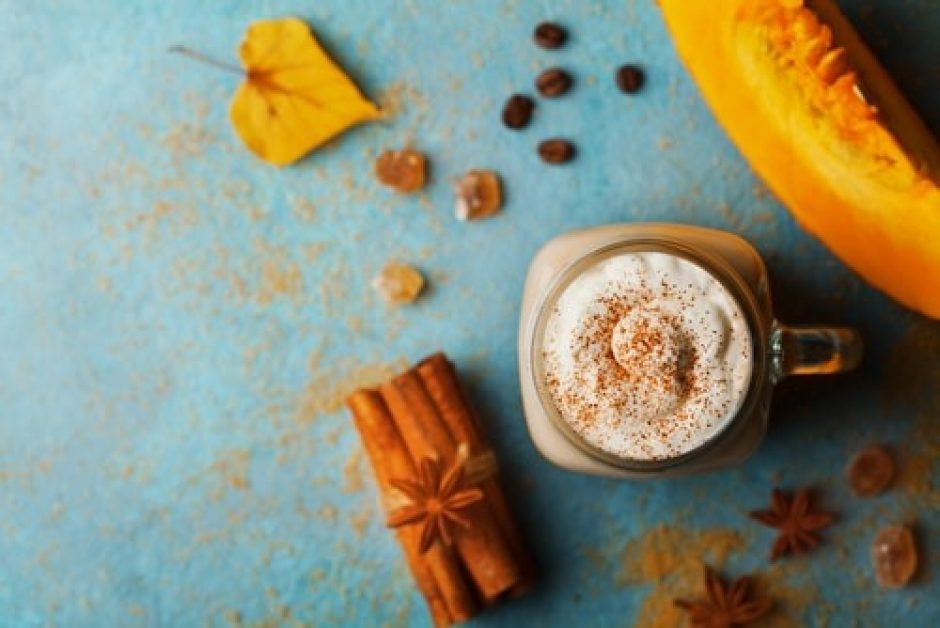Pumpkin Spice & Fall Flavors

Pumpkin spice, that nostalgic deliciousness that recalls crisp fall days, cozy fires and colorful leaves, now starts appearing on store shelves as early as August and in products as diverse as coffee to candles. So what is the flavor profile of “pumpkin spice”, really? First of all, it is mostly not “pumpkin”. Though pumpkins are nutrient-dense (containing lots of important vitamins and minerals) and low-cal (only 49 calories per one cup cooked), the flavor of pumpkin by itself, raw or cooked, is bland. Native Americans and our first immigrant settlers consumed pumpkins, not for their flavor but because they grew quickly and provided calories and nutrients, important for sustenance. However, because of pumpkin’s bland taste, cooks (and later chefs and flavorists), found it easy to create their own, delicious flavor profiles of pumpkin by first adding common ingredients (butter, sugar and salt) and later spices from around the world. Today, the flavor of “Pumpkin Spice” is a creative and pliable combination of butter, vanilla, cinnamon, ginger, clove and other spices as per the discretion of its creator.
Pumpkin spice flavoring has only existed for about 50 years. McCormick put together the traditional pumpkin flavoring of nutmeg, ginger, cinnamon and allspice, called it Pumpkin Spice – and a craze was born. While it was initially created to help cooks who might be intimidated by all of the different spices that went into the creation of a pie, pumpkin spice soon took on a life of its own as a flavoring in a wide variety of unexpected foods – OREOS®, Frosted Flakes®, coffee creamers, ice cream, Pringles® (yes, Pringles), the list goes on and on.
For many of us, the pumpkin spice flavor and that heavenly scent take us right back to the Thanksgivings of our childhood, when the aroma of pies fresh from the oven threatened to make us rush through our turkey dinner so that we could experience that custardy goodness with a dollop of whipped cream for good measure. Those who love the current version of pumpkin pie would no doubt be surprised to learn that the earliest known appearances of their favorite dessert was more like a pumpkin soup with sweetened milk and spices added and then baked right in the shell (there wouldn’t have been flour to make a crust when the Pilgrims made their version).
Pumpkin pie as we know it today didn’t start gracing the Thanksgiving table until the early 19th century. After the Civil War, pumpkin pie was looked upon as one more symbol of Yankee culture, where southern cooks preferred sweet potato pie. Another variation in the south was to add bourbon and pecans to the traditional flavors. And the canned pumpkin that most of us use to make our Thanksgiving delicacies was first introduced by Libby in 1929, saving us from roasting, scooping, straining and pureeing our own.
Pumpkin spice flavoring has become synonymous with fall and the Thanksgiving feast, ranking right up there with the turkey and cranberry sauce. It can cause an almost physical reaction, too - a gentle sniff of a pumpkin spice-scented candle will conjure up visions of the table set for dinner, with a crackling fire in the background and the perfectly roasted turkey coming out of the oven.
The next time you order your pumpkin spice latte to go along with your pumpkin spice pancakes, right after you have your pumpkin spice cereal, imagine what our forefathers would think about how high we’ve elevated this humble squash. From tantalizing our taste buds to sparking our nostalgia, the pumpkin has literally become as American as apple pie. Only better.
I’m still not sold on those pumpkin spice potato chips, though…
Now that your mouth is watering and your brain is on pumpkin spice, let us help you flavor your next pumpkin crazed product. Call us at 847-924-5855 or click here to request a sample.